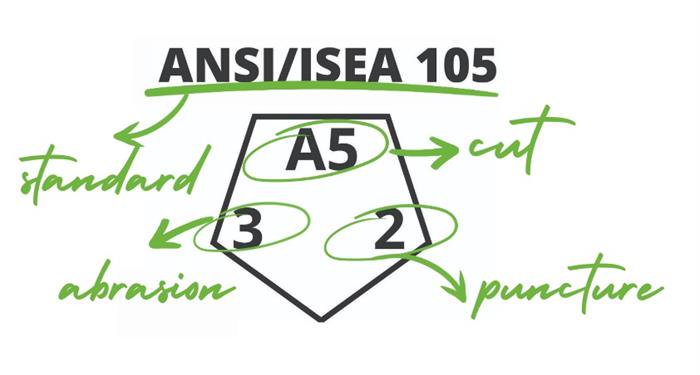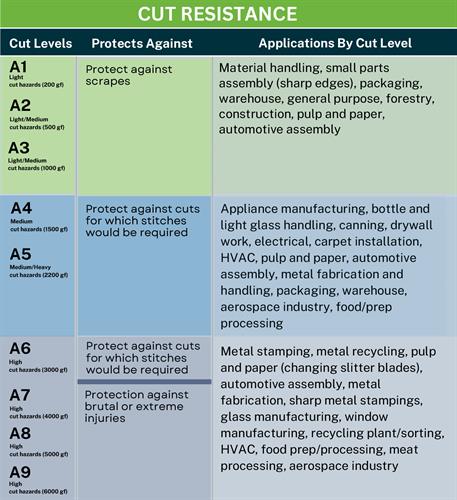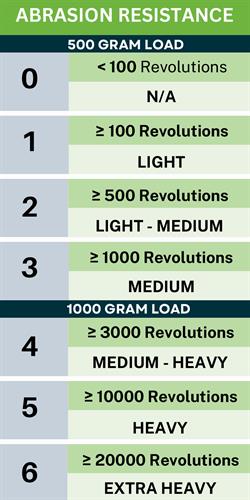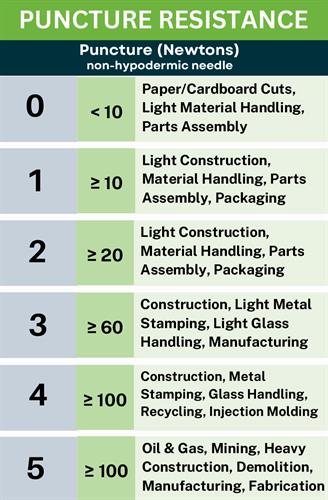Understanding the Changes to New ANSI/ISEA 105-2024 Standard

The Facts at Hand
The Bureau of Labor Statistics (BLS) and International Safety Equipment Association (ISEA) report 454,890 hand injuries annually in the United States with 45% of these injuries resulting from cuts, lacerations, and/or punctures. Serious hand injuries can lead to long-term disabilities like nerve damage, limited mobility, and even amputation. Moreover, hand injuries contribute significantly to the overall cost of work injuries, totaling $167 billion in 2022. Injuries often result in downtime and decreased productivity leading to further costs as hand injuries were the most frequent in DART cases (days away from work, restricted, or transferred) during 2021-2022.
According to OSHA, 71% of hand and arm injuries could have been prevented with PPE, specifically safety gloves. Yet, 70% of workers don’t wear hand protection. And of those who do, 30% don’t wear the right kind of glove for the task.
These numbers don’t lie. Protecting hands from cuts, abrasions, and punctures is critical to maintaining a safe and productive environment.
Enter ANSI/ISEA 105-2024 American National Standard for Hand and Arm Protection
ANSI/ISEA 105-2024 is the sixth edition of the voluntary industry consensus standard on hand and arm protection classification that was first published in 1999. It provides a comprehensive classification system based on the performance criteria of occupational hand and arm protection, including gloves and sleeves. This updated standard makes it easier for manufacturers, employers, and safety professionals to specify and select the right gloves and sleeves for specific workplace hazards, as part of regulatory compliance. Additionally, it provides or refers to appropriate test methods for specified criteria and provides pass/fail criteria to allow users to interpret test results and determine if certain hand protection products meet their needs. Otherwise stated, ANSI/ISEA establishes performance levels, testing, and classification for gloves designed to provide abrasion resistance while performing occupational tasks. Click here to get the standard.
ANS/ISEA 105-2024 Labeling Guidelines
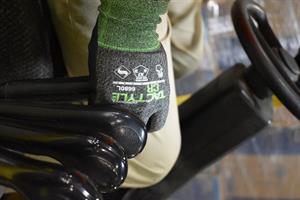 As previously mentioned, the ANSI/ISEA 105-2024 standard provides a thorough classification system for hand and arm protection against mechanical and chemical hazards. It includes detailed performance ranges for properties like cut resistance, abrasion resistance, puncture resistance, and chemical permeation resistance. The standard categorizes mechanical protection into specific levels:
As previously mentioned, the ANSI/ISEA 105-2024 standard provides a thorough classification system for hand and arm protection against mechanical and chemical hazards. It includes detailed performance ranges for properties like cut resistance, abrasion resistance, puncture resistance, and chemical permeation resistance. The standard categorizes mechanical protection into specific levels:
- Cut Resistance: Classified by the weight needed to cut through the material with 20 mm of blade travel.
- Abrasion Resistance: Measured by the number of abrasion cycles the material can withstand before failure.
- Puncture Resistance: Assessed by the force required to puncture the material with a sharp probe.
Click here to download the Key to Hand Classifications Poster for more information.
New Pentagon Standard Classification Marking
Hand protection tested under the updated ANSI/ISEA 105 2024 will now include the new pentagon standard classification marking created to simplify and standardize the identification of protective glove performance levels, including cut, abrasion, and puncture resistance (previously identified by three separate markings.) By consolidating this information into a single, easily recognizable label, it improves usability for workers and reduces the risk of selecting inadequate protection. The marking also streamlines product comparison, and ensures clarity in marketing and documentation, helping others make informed decisions quickly and accurately.
The testing methods and performance levels for cut, abrasion, and puncture resistance remain unchanged in the 2024 revision. Instead, the update focuses on standardizing the labeling of these protective properties.
Same Scale to Determine Cut Scores
Same Scale to Determine Abrasion Resistance
The abrasion resistance scale remains the same as previous versions, but the 2024 standard places greater emphasis on the standardized abrasion label via the pentagon. The scale is based on the number of cycles a glove material endures before failure, as tested under specific conditions using the Taber Abraser with a standardized abrasive material. This ensures uniformity in how abrasion resistance is measured and reported.
Same Scale to Determine Puncture Resistance
The ANSI/ISEA 105-2024 standard maintains the existing puncture resistance testing protocols and performance levels. It continues to measure puncture resistance based on the force required to penetrate the glove material with a specified stylus, quantified in newtons (N), but enhances user comprehension through standardized labeling via the pentagon.
Click here to explore the ANSI/ISEA 105-2024 Guide for essential labeling and usage guidelines to help you identify and select hand protection that meets the new standard for cut, abrasion, and puncture resistance.
Is Compliance Mandatory?
While following the ANSI/ISEA 105-2024 standard is voluntary, OSHA requires employers to address the use of appropriate hand protection when employees’ hands are exposed to hazards (See sections 1910.138(a); 1910.138(b) of the OSHA Occupational Safety and Health Standards).
Manufacturer adherence to the new labeling guidelines is strongly encouraged to promote consistency and enhance user safety across the industry. Manufacturers are advised to explicitly reference “ANSI/ISEA 105-2024” in their product documentation and marketing materials to ensure clarity and avoid ambiguity.
These updates aim to enhance workplace safety by providing clearer information on glove performance, thereby facilitating better selection of appropriate hand protection in various occupational settings.
Enter for a Chance to Win Gloves
To celebrate the release of the new ANSI/ISEA 105-2024 standard for hand protection, ISEA is giving away free safety gloves that meet the latest safety guidelines, and Saf-T-Gard is a participating PPE provider. Don’t miss this opportunity to upgrade your hand protection and stay ahead of the curve in workplace safety. Enter now to receive your free pair of gloves by following these two steps:
- Follow ISEA on Social Media – Like on Facebook, LinkedIn or Instagram.
- Fill out the Form – Click here to complete and submit your contact information.


